The Nuts and Bolts of Legal Malpractice
The New York Law Journal by Andrew Lavoott Bluestone - December 27, 2011
Every attorney has a story and an opinion about legal malpractice. They often rate the work of other attorneys on an attorney malpractice scale. These opinions are freely stated, and clients may be told that another attorney has committed legal malpractice. In general, what the attorneys are saying is that a specific act of another attorney fell below the standard believed to be "good and acceptable" by the opinion holder. However, that's just the start of the analysis. Importantly, this question of "departure" is but the first of four elements of legal malpractice, and generally, the easiest to discern. Human behavior is abundantly full of mistakes, hesitations, and wrong turns. Attorneys make mistakes, for both human and institutional reasons. Human reasons for mistakes are obvious. Lack of sufficient knowledge, miscalculation, inattention, family crises, personal character flaws, substance abuse problems, physical problems all create mistakes. Institutionally, attorneys over- book themselves in order to attempt to work to full capacity. Long delays between court dates, or between litigation events, requires that multiple cases be worked on at the same time. For attorneys who practice in contingent fee areas, there is no guarantee of cash flow, and a common practice is to file more cases than one might service at any given time. Large firms have to cultivate a pyramidal scheme of partners and associates, and those associates must be kept at work. So it goes. Departure is the first of the four elements of legal malpractice. This article will catalogue the four elements and sub-elements of legal malpractice as an attempted guide to the analysis of whether any particular legal outcome is legal malpractice and whether it can be prosecuted.
Departures
In order to recover damages for legal malpractice, a plaintiff must demonstrate that the attorney "failed to exercise the ordinary reasonable skill and knowledge commonly possessed by a member of the legal profession"1 and that the attorney's breach of this duty proximately caused plaintiff to sustain actual and ascertainable damages,2 beyond which a plaintiff must show that he or she would have prevailed in the underlying action or would not have incurred any damages but for the lawyer's negligence."3
Proximate Cause
As a second element, plaintiff must plead and prove that the departures "from good and accepted practice were the proximate reason for the loss sustained."4 Another way of saying this is that plaintiff must demonstrate "that he or she would have prevailed in the underlying action [or transaction] or would not have incurred any damages" except because of negligence of the attorney.5 Standing is one aspect of proximate cause. One must have a right to sue the attorney before the attorney's departure proximately cause damage. Privity of contract, no longer necessary in almost any other sphere of the law, still obtains here. In legal malpractice cases against criminal defense attorneys, the proximate cause of the damages is the guilty plea, or conviction, not representation. This determination is viewed as a policy decision by the courts.6 To state a cause of action for legal malpractice arising from negligent representation in a criminal proceeding, a plaintiff must allege his innocence or a colorable claim of innocence of his guilt. Id. One obvious example of lack of proximate cause occurs when the underlying claim was already barred by the statute of limitations before commencement even though the attorney's negligence was "clearly inexcusable."7 Another example would be one in which it is clear that plaintiff was responsible for her own problem, such as failing to cancel a contract of sale.8 Other examples arise in the settlement of the underlying case.9 In Rupert v. Gates & Adams PC, plaintiff claimed shortcomings in divorce representation, which then was resolved in a global settlement which itself resolved a bankruptcy proceeding. "In doing so, plaintiff precluded pursuit of the very means by which defendants' representation of plaintiff in the matrimonial action could have been vindicated," the Fourth Department held. Nevertheless, the rule generally remains that a legal malpractice action remains viable if it is alleged that the settlement of the action was effectively compelled by mistakes of counsel.10 Beyond the scope of this article is a contrary line of matrimonial cases in the First Department in which mere settlement (along with the rote allocution that the client was satisfied with the attorney's work) deprives them of a legal malpractice cause of action.11 Bankruptcy filings by a client are often associated with legal cases gone wrong, and factor into the analysis of standing to bring legal malpractice claims. Assets of the debtor are property of the estate, and not property of the debtor. A pre-petition legal malpractice lawsuit or cause of action becomes an asset of the estate. Failure to disclose a pre-petition legal malpractice cause of action in the schedules of a bankruptcy petition deprives the plaintiff of the legal capacity (standing) to sue for legal malpractice later. It is the trustee, and only the trustee in bankruptcy who has that standing.12 Attorney fee awards may similarly deprive plaintiff of standing to bring the action, or may be enunciated as "blocking" plaintiff from suing under res judicata.13 The reasoning goes that legal fees may not be awarded in the face of legal malpractice, and if legal fees are awarded, in arbitration, or as a charging lien,14 or as an application for fees in a bankruptcy matter,15 or in other circumstances, then there could have been no malpractice, whether the issue was raised or not. Hence, when plaintiff sues for legal malpractice after an attorney fee has been awarded, the case is dismissible under res judicata or collateral estoppel.
'But for' Issues
The third element of legal malpractice is "but for" which has become the shorthand for the "case within a case" or "lawsuit within a lawsuit." It is not completely clear where "proximate cause" ends and "but for" begins, but they are doctrinally different. Every negligence case requires "proximate cause," but only legal malpractice cases require "but for" causation. This requirement is a distinctive "feature of legal malpractice actions arising from an attorney's alleged negligence in preparing or conducting litigation." It is additional to the element of proximate cause, requiring the jury to find the hypothetical outcome of the underlying litigation before finding the attorney's liability in the litigation before it.16 Failure to allege "but for" causation is sufficient to dismiss the case.17 Success but for the negligence of counsel is the required proof. 18 Courts often determine that the allegations of a complaint are "speculative." As an example, in 180 E. 88th St. Apt. Corp. v. Law Off. of Robert Jay Gumenick,19 the First Department found "in any event" that causation was "speculative and otherwise unsubstantiated by the record." Another case,Stackpole v. Cohen, Ehrlich & Frankel, LLP,20 discusses whether a doctor would not have purchased an apartment but for the attorney's negligence. The First Department reviewed testimony that the doctor was aware of the "horrors" of amending the certificate of occupancy several years earlier in an unrelated transaction, and so she could not blame the attorneys for this particular outcome. One particularly unique issue is the attorney judgment rule.21 "Attorneys are free to select among reasonable courses of action in prosecuting clients' cases without thereby exposing themselves to liability for malpractice."22 Questions as broad as the selection of unsuitable experts,23 the selection of questions on cross-examination and what causes of action to bring are subsumed within the attorney judgment rule.
Ascertainable Damages
Fourth and last, damages in a legal malpractice case are designed "to make the injured client whole."24 Those damages are calculated depending upon the situation in which the legal malpractice case arises. The simplest case is that of a personal injury action never started, in which the statute of limitations has run. There, the finder of fact must determine the value of a hypothetical judgment25 that would have been obtained had the attorney commenced the action. Put another way, the measure of damages is generally "the value of the claim lost."26 Plaintiff must plead and prove actual ascertainable damages as a result of the attorney's negligence.27 The Second Department in Siciliano v. Forchelli & Forchelli noted, mere speculation about a loss from an attorney's "alleged omission is insufficient to sustain a prima facie case of legal malpractice."28 Collectibility is an issue in the determination of damages. After plaintiffs prove they would have obtained a specific dollar verdict, they then must prove (in the Second, Third or Fourth Department) how much of that verdict would be collectible. Damages recoverable are limited to the amount that "could or would have been collected" in the underlying action.29 As noted by the Second Department, collectibility of a "hypothetical judgment against the underlying tort-feasor is a factor to be considered by the trier of fact."30 In the First Department, the burden is on defendant to show non-collectibility.
Conclusion
Legal malpractice consists of four elements. Almost anyone can recognize the first, and in most cases, the departure is obvious, patent and prominent. Proximate cause and ascertainable damages are fairly easy to determine, after looking at privity and standing. The major battleground in legal malpractice is in the "case within a case" analysis. Plaintiffs lose underlying cases all the time. In trip and fall cases, there are defenses of notice, reasonable care and de minimus defects. In car cases, there are defenses of serious physical injury. In medical malpractice there are medical judgment defenses. In all cases, the underlying matter is subject to technical defenses of statute of limitations, standing, collateral estoppel and res judicata, as well as the more general defense that "plaintiff would have lost the case." It is here that the major battle on otherwise obvious legal malpractice cases takes place. Andrew Lavoott Bluestone is an attorney in Manhattan, specializing in legal malpractice litigation. He is board certified in legal malpractice by the American Board of Professional Liability Attorneys.
Endnotes:
1. Rudolf v. Shayne, Dachs, Stanisci, Corker & Sauer, 8 NY3d 438 (2007); Leder v, Spiegel, 9 NY3d 836 (2007).
2. McCoy v. Feinman, 99 NY2d 295 (2002).
3. Davis v. Klein, 88 NY2d 1008 (1996).
4. O'Callaghan v, Brunelle, 84 AD3d 581 (1st Dept. 2011).
5. Hamoudeh v. Mandel, 62 AD3d 948 (2d Dept. 2009); Markowitz v, Kurzman Eisenberg Corbin Lever & Goodman LLP, 82 AD3d 719 (2d Dept. 2011).
6. Carmel v. Lunney, 70 NY2d 169 (1987).
7. Dempster v. Liotti, 2011 NY Slip Op 4408 (2d Dept. 2011).
8. Bells v. Foster, 83 AD3d 876 (2d Dept. 2011).
9. Rupert v. Gates & Adams PC, 83 AD3d 1393 (4th Dept. 2011).
10. Garnett v. Fox, Horan & Camerini LLP, 82 AD3d 435 (1st Dept. 2011).
11. Harvey v. Greenberg, 82 AD3d 683 (1st Dept. 2011); Weissman v. Kessler, 78 AD3d 465 (1st Dept. 2010); Katebi v. Fink, 51 AD3d 424 (1st Dept. 2008).
12. Whelen v. Longo, 7 NY3d 821 (2006).
13. Mahler v. Campagna, 60 AD3d 1009 (2d Dept. 2009).
14. Siegel v. Werner & Zaroff, PC, 270 AD2d 119 (1st Dept. 2000).
15. Breslin Realty Dev. Corp v. Shaw, 72 AD3d 258 (2d Dept. 2010).
16. McKenna v. Forsyth & Forsyth, 280 AD2d 79 (4th Dept. 2001).
17. Waggoner v. Caruso, 14 NY3d 874 (2010).
18. Davis v. Klein, 88 NY2d 1008 (1996).
19. 180 E. 88th St. Apt. Corp. v. Law Off. of Robert Jay Gumenick, 84 AD3d 582 (1st Dept. 2011).
20. Stackpole v. Cohen, Ehrlich & Frankel, LLP, 82 AD3d 609 (1st Dept. 2011).
21. Iocovello v. Weingrad & Weingrad, 4 AD3d 208 (1st Dept. 2004); Rosner v, Paley. 65 NY2d 736 (1985).
22. Dweck Law Firm LLP v. Mann, 283 AD2D 292 (1st Dept. 2001).
23. Dimond v. Salvan, 78 AD3d 407 (1st Dept. 2010); Dimond v. Heinz Pet Prods. Co. 298 AD2d 426 (2d Dept. 2002).
24. Shayne, supra; Campagnola v. Mulholland, Minion & Roe, 76 NY2d 38 (1990).
25. McKenna v. Forsyth & Forsyth, supra.
26. Campagnola, supra.
27. Barnett v. Schwartz, 47 AD3d 197 (2d Dept. 2007).
28. Siciliano v. Forchelli & Forchelli, 17 AD3d 343 (2d Dept. 2005).
29. Schmitt v. McMillian, 175 AD 799 (1st Dept. 1916); Vooth v. McEachen, 181 NY 28 (1905).
30. Chiaffi v. Wexler, Bergerman & Crucet, 116 AD2d 614 (2d Dept. 1986).
MLK said: "Injustice Anywhere is a Threat to Justice Everywhere"
End Corruption in the Courts!
Court employee, judge or citizen - Report Corruption in any Court Today !! As of June 15, 2016, we've received over 142,500 tips...KEEP THEM COMING !! Email: CorruptCourts@gmail.com
Most Read Stories
- Tembeckjian's Corrupt Judicial 'Ethics' Commission Out of Control
- As NY Judges' Pay Fiasco Grows, Judicial 'Ethics' Chief Enjoys Public-Paid Perks
- New York Judges Disgraced Again
- Wall Street Journal: When our Trusted Officials Lie
- Massive Attorney Conflict in Madoff Scam
- FBI Probes Threats on Federal Witnesses in New York Ethics Scandal
- Federal Judge: "But you destroyed the faith of the people in their government."
- Attorney Gives New Meaning to Oral Argument
- Wannabe Judge Attorney Writes About Ethical Dilemmas SHE Failed to Report
- 3 Judges Covered Crony's 9/11 Donation Fraud
- Former NY State Chief Court Clerk Sues Judges in Federal Court
- Concealing the Truth at the Attorney Ethics Committee
- NY Ethics Scandal Tied to International Espionage Scheme
- Westchester Surrogate's Court's Dastardly Deeds
Monday, December 26, 2011
Subscribe to:
Post Comments (Atom)
Blog Archive
-
▼
2011
(349)
-
▼
December
(23)
- Appeals Panel Takes Swipe at Judge Who Follows Law
- Finding Holds Only Non-Immigrant Attorney-Wannabee...
- Corrupt Judge Anthony Scarpino in the News
- 9th Judicial District Attorney Accused of Stealing...
- Judge Sanctions Bank, Law Firm in Foreclosure Case
- Schumer's Brother-in-Law Stirs Controversy in Fede...
- The Nuts and Bolts of Legal Malpractice
- Schumer Plays Santa in Federal Judgeship to Brothe...
- Fraudster Lawyer, Accountant Removed From $400 Mil...
- More Political Chaos Keeps Federal Bench Unable to...
- Defense Attorney Helps Client Get Another 4.5 Year...
- Judge Recuses From Foreclosure Involving His Lender
- Corrupt Tembeckjian Goons To Hold Judicial "Ethics...
- Lying Lawyer Slammed
- Meet The Mayor's Judge Pickers
- Mayor Builds Legacy With Appointments of 'Highly Q...
- IRS Attacks Brooke Astor Estate in Corrupt Westche...
- Malpractice Suit Proceeds Against Pryor Cashman
- Disciplinary Probe May Proceed Against Surrogate
- Real Judge Reverses Fake Judge's Fixed Ruling
- New Make-Believe Guidelines For Court-Approved Blo...
- More on Corrupt Political Pressures Polluting Our ...
- New York Judiciary's Budget Insult Submitted to Go...
-
▼
December
(23)
See Video of Senator John L. Sampson's 1st Hearing on Court 'Ethics' Corruption
The first hearing, held in Albany on June 8, 2009 hearing is on two videos:
Video of 1st Hearing on Court 'Ethics' Corruption
The June 8, 2009 hearing is on two videos:





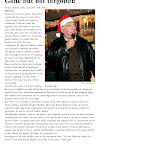

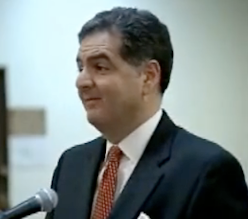
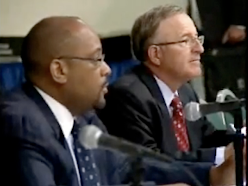
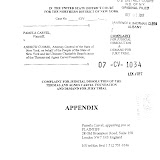
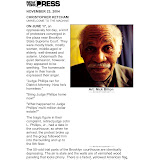
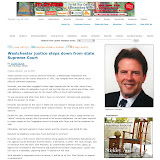
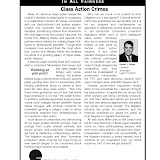

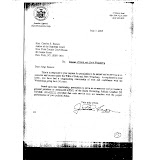
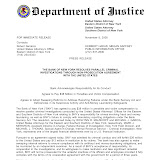
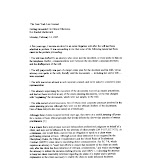
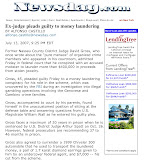
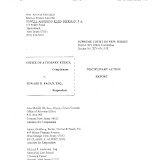
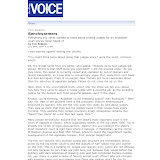
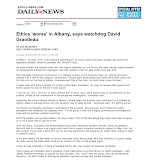
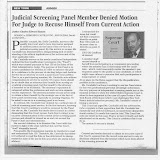

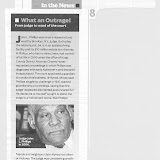
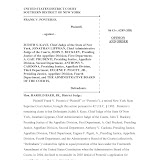
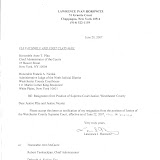
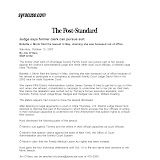
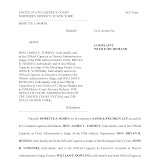

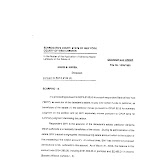
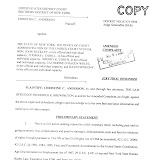
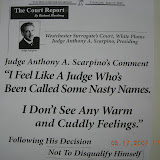
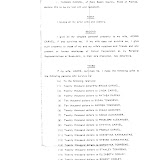
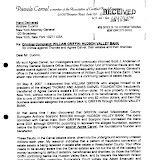
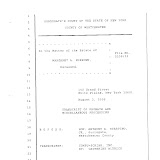
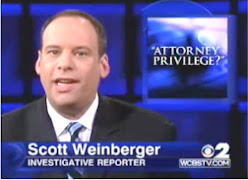
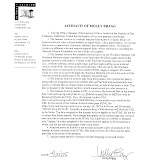
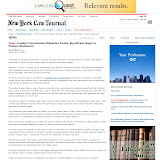
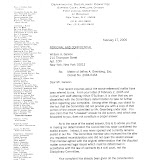
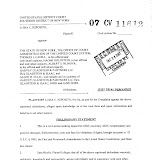
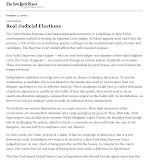
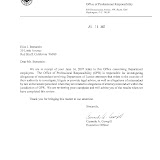
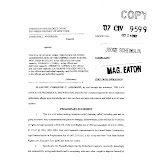
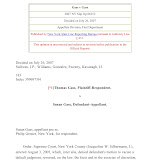
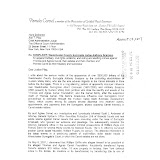

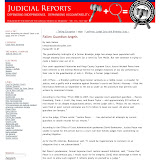
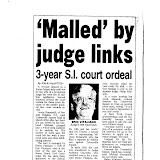
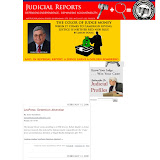
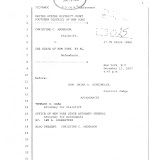
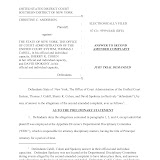
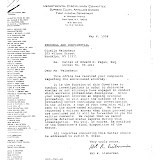
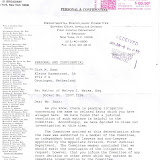
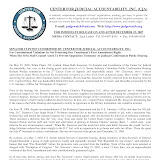
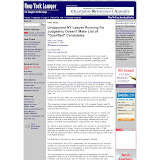
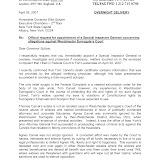
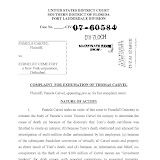
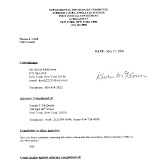
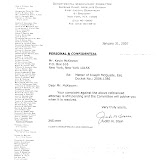
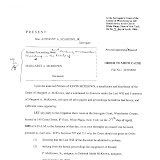
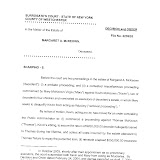
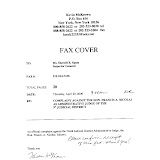
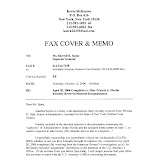
6 comments:
I have a lot of respect for this attorney. He has the nerve to go after the corrupt lawyers while most of his fellow spineless brethren keep their eyes, ears and mouths shut.
I spoke to Mr. Bluestone last Feb.He requested that I hire a private investigator to assist me in pointing out the massaive mount of legal fraud my family has been subjected to in New York courts.
My private investigator Keith Fontana,Manorville, NY.He spoke briefly to Mr.Bluestone concerning what he required from him.
Later on March 4th.2011. I met with Mr.Fontana in a local diner.Gave him some copies of confidential paperwork along with $500.00 in cash towards retaining Mr.Fontana. I sent 2 hours w him explaining how my former spouse has court access & has prevented me from going before a judge in Suffolk county re:marital settlment.That my court documents were being signed by my spouse in place of a judge.Spouse is not legally authorized to do so.
When I got home that night what I immdiately noticed was that Mr. Fontana had given me a receipt for the $500.00 he had requested I give him cash. THE VERY RECEIPT HE HANDED ME CAME OUT OF A FOLDER MR.FONTANA HAD IN HIS BRIEF CASE.IT TOO WAS SIGNED KEITH FONTANA PVT.INVESTIGATOR.But in my exspouses handwriting.
I am both disheartened and disgusted. Am embarassed to have to live in NY UNTIL THIS IS SETTLED.
The system is rigged, everyone must remember that Judges are attorneys and they work with their brother attorneys, in short the system is rigged - The Fix Is In!
Cont.I never heard another word from the above pvt.investigator.Never returned my p.calls pr my money.
BLOW HIS HEAD OFF !!!!!!!!!!!!!!
Quite astonishing that America has the high incidence of legal malpractice. This means that the country needs talented malpractice attorney.
Post a Comment